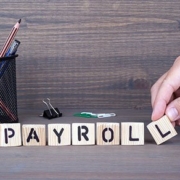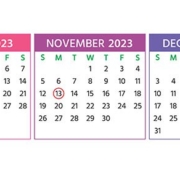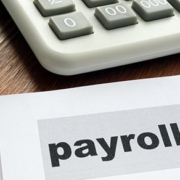BUNCHING YOUR DEDUCTIONS CAN PROVIDE BIG TAX BENEFITS
If your tax deductions normally fall short of itemizing your deductions or even if you are able to itemize, but only marginally, you may benefit from using the “bunching” strategy.
The tax code allows most taxpayers to utilize the standard deduction or itemize their deductions if that provides a greater benefit. As a rule, most taxpayers just wait until tax time to add everything up and then use the higher of the standard deduction or their itemized deductions.
If you want to be more proactive, you can time the payments of tax-deductible items to maximize your itemized deductions in one year and take the standard deduction in the next.
For the most part, itemized deductions include medical expenses, property taxes, state and local income (or sales*) taxes, home mortgage and investment interest, charitable deductions, unreimbursed job-related expenses, and casualty losses. The “bunching strategy” is more commonly associated with medical expenses, tax payments and charitable deductions, although there are circumstances in which the other deductions might come into play. There are many opportunities to bunch deductions, and the following are examples of the bunching strategies most commonly used:
Medical Expenses – You contract with a dentist for your child’s braces. The dentist may offer you an up-front, lump sum payment or a payment plan. By making the lump sum payment, the entire cost is credited in the year paid, thereby dramatically increasing your medical expenses for that year. If you do not have the cash available for the up-front payment, then you can pay by credit card, which is treated as a lump-sum payment for tax purposes. If you use a credit card, you must realize that the credit card interest is not deductible, and you need to determine if incurring the interest is worth the increased tax deduction. Another important issue with medical deductions is that only the amount of the total medical expenses that exceeds 10% (7.5% if age 65) of your adjusted gross income (AGI) is actually deductible. If you are caught by the Alternative Minimum Tax (AMT), then only the amount that exceeds 10% of your AGI is actually deductible. So, there is no tax benefit in bunching medical deductions if the total is less than your AGI threshold.
If the current year is an abnormally high-income year, you may, where possible, wish to put off making medical expense payments until the subsequent year when the 10% (7.5%) threshold is less.
- Taxes – Property taxes on real estate are generally billed annually at mid-year, and most locales allow the tax bill to be paid in semi-annual or quarterly installments. Thus, you have the option of paying it all at once or paying in installments. This provides the opportunity to bunch the tax payments by paying one semi-annual installment or two quarterly installments and a full year’s tax liability in one year and only paying one semi-annual installment or two quarterly installments in the other year. In doing so, you are able to deduct 1-½ year’s taxes in one year and 50% of a year’s taxes in the other. If you are thinking of making the property tax payments late as a way to accomplish bunching, you should be cautious. The late payment penalty will probably wipe out any potential tax savings.
If you reside in a state that has state income tax, the state income tax paid or withheld during the year is deductible as a federal itemized deduction. So, for instance, if you are paying state estimated tax in quarterly installments, the fourth-quarter estimate is generally due in January of the subsequent year. This gives you the opportunity to either make that payment before December 31st, and be able to deduct the payment on the current year’s return, or pay it in January before the January due date and use it as a deduction in the subsequent year.
A word of caution about the itemized deduction for taxes! Taxes are only deductible for regular tax purposes. So, to the extent you are taxed by the AMT, you derive no benefits from the itemized deduction for taxes.
- Charitable Contributions – Charitable contributions are a nice fit for “bunching” because they are entirely payable at the taxpayer’s discretion. For example, if you normally tithe at your church, you could make your normal contributions during the year and then prepay the entire subsequent year’s tithing in a lump sum in December of the current year, thereby doubling up on the church contribution one year and having no deduction for charity in the other year. Normally, charities are very active with their solicitations during the holiday season, giving you the opportunity to make the contributions at the end of the current year or simply wait a short time and make them after the end of the year. If you mail a check to a charity it will be deductible in the year that you mail it; contributions you charge to a credit card are deductible in the year you make the charge; and contributions you make by text message are deductible in the year the contribution is charged to your phone or wireless account.
If you think a “bunching” strategy might benefit you, please call this office to discuss the issue and set up an appointment for some in-depth strategizing.
*The option to deduct state and local sales tax instead of state and local income tax does not apply for 2014 and subsequent years, but there is a chance Congress may reinstate the provision retroactively. Please check with this office for updates.








Leave a Reply
Want to join the discussion?Feel free to contribute!